Filters
Content Type
Topics
Finding the Right Acquia Alternative Platform
There’s a tectonic shift happening in digital experience platforms (DXPs).
The DXP dream – where everything from content management to marketing tools is neatly bundled into one platform – seemed like the perfect solution for a while. But in reality, businesses have realized that a one-size-fits-all approach can feel more like a straitjacket than a solution. Take Acquia as an example. AAcquia is a digital experience platform (DXP) optimized for Drupal. The platform provides hosting, development tools and multisite management capabilities. Acquia is not Drupal itself – Drupal is an open-source CMS, while Acquia offers commercial hosting and tools for Drupal sites.. Once a leader in the DXP space, Acquia now finds itself facing more competition than ever because of its aging suite of acquired tools and inflexible all-in-one service model.
The limitations of Acquia’s approach are becoming more apparent. As a result, many are looking for more flexible, scalable alternatives that better align with their unique needs and long-term goals.
While Acquia offers customer data platform and digital asset management solutions beyond its core DXP, this guide focuses on content management and digital experience platform alternatives.
Let's dive into why so many organizations are seeking Acquia alternatives and explore some of the top platforms that might just be the right fit for you!
Why organizations are looking for alternatives to Acquia
Acquia alternatives fall into three categories:
- Digital Experience Platforms (DXPs): Comprehensive platforms that include content management, hosting, and digital experience tools.
- Customer Data Platforms (CDPs): Platforms that unify customer data from various sources. Examples include Salesforce Data Cloud, Adobe Real-Time CDP, and Twilio Segment.
- Marketing and Cloud Services: Tools focused on specific functions like marketing automation, digital asset management, and hosting infrastructure.
As organizations evolve and digital strategies become more complex, the limitations of traditional DXPs like Acquia are becoming increasingly apparent. Organizations seek Acquia alternatives for three primary reasons:
- Flexibility: Acquia's monolithic platform limits tool selection. Organizations need modular solutions that allow them to choose different vendors for each function without long-term lock-in.
- Speed: Acquia's implementation process requires extended setup time. Modern businesses need platforms that enable rapid deployment and iteration to support faster innovation cycles.
- Integration: Acquia's ecosystem restricts third-party connections. Teams require platforms with open APIs and extensive integration capabilities across marketing technologies and content management systems.
We were having to manage each site’s subtheme in a separate repository on Acquia for each of our sites. And so any deployments or changes would have to be provisioned out to each site, which was taking a lot of time.”
- Jeremy Pieper, Web Development Manager at Perforce
Here’s an overview of some of Acquia’s top alternatives:
Pantheon: The top Acquia alternative
Image
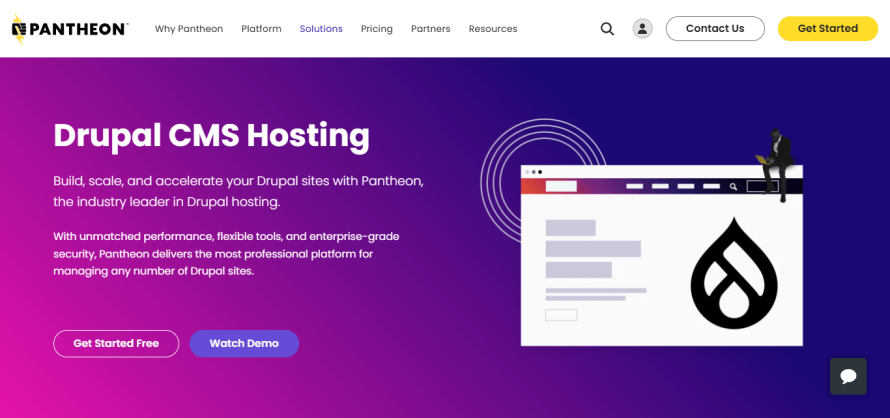
If you’re looking for a more agile, intuitive and scalable platform, consider Pantheon. Pantheon is a platform for hosting and managing Drupal, WordPress, and Next.js sites. The platform supports Drupal, allowing organizations to migrate from Acquia without rebuilding their CMS. Pantheon's WebOps approach provides a performance-driven foundation for building and scaling digital experiences.
Smooth multisite management
Pantheon's Upstreams feature allows you to manage multiple Drupal sites from a single source. This reduces complexity and ensures consistency across site networks without extensive customization.
Custom Upstreams feels like an out-of-the-box solution. It is a silver bullet helping us push out broad changes to our sites in no time.”
- Jeremy Pieper, Web Development Manager at Perforce
Both Acquia and Pantheon enable multisite management from a shared codebase. However, Acquia's Site Factory provides centralized governance and standardization across sites. Pantheon's Upstreams allows individual sites to diverge and customize independently. This difference enables business units to tailor Drupal implementations without the constraints of a standardized template system.
Integration capabilities
Pantheon provides REST APIs for site management and deployment automation. The platform integrates with continuous integration tools, version control systems, and third-party services. This allows teams to build custom workflows and connect Pantheon with existing development toolchains.
Development workflow
With tools like Multidev, Pantheon lets teams spin up multiple development environments in parallel. This enables parallel development and real-time collaboration without workflow conflicts.
Image

No more fighting with clunky workflows or waiting for approval – everyone can work together, in real time, on their own terms. This leads to faster deployments, smoother processes and ultimately, better outcomes for your digital experience.
Pantheon’s Multidev feature was a huge bonus. Multiple developer environments allow us to develop with partner agencies in a much more agile way.”
– Jim Alberque, GIS and Emerging Technology Manager at The City of Raleigh
Development workflow
Pantheon supports the same Drupal core as Acquia. Organizations can transfer Drupal sites without changing the underlying CMS. Custom modules and configurations may require adjustment during migration, but the core Drupal investment carries forward.
Other Acquia alternatives
While Pantheon stands out as a leading alternative to Acquia, the digital experience space is full of platforms offering unique features and strengths. Let’s explore some of these other options:
1. Sitecore
Image
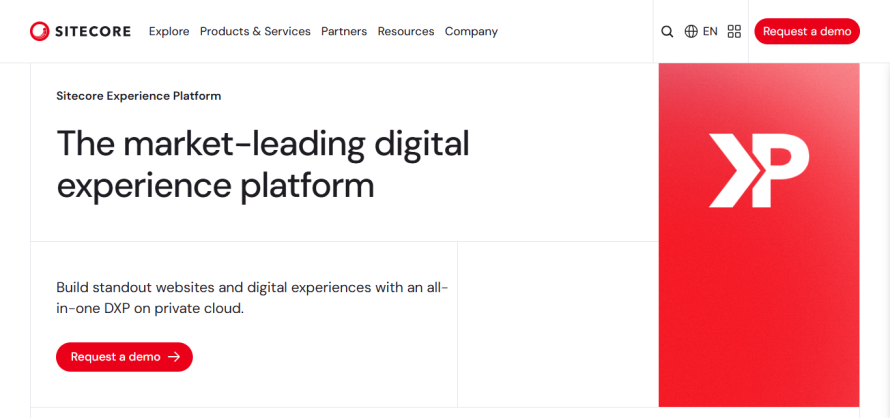
Sitecore is an enterprise DXP that includes content management, personalization, and omnichannel delivery. The platform uses machine learning and AI capabilities to deliver tailored content and individualized customer journeys. Sitecore requires .NET framework and SQL Server infrastructure.
Sitecore comes with a hefty price tag, and its steep learning curve means it’s not the easiest solution to implement, especially for smaller teams. The platform works best for large organizations with sophisticated marketing capabilities and the resources to support enterprise-level complexity. For companies looking for a more streamlined, budget-conscious option, Sitecore may be overkill.
Don’t forget to check out our post on Sitecore alternatives!
2. Bloomreach
Image
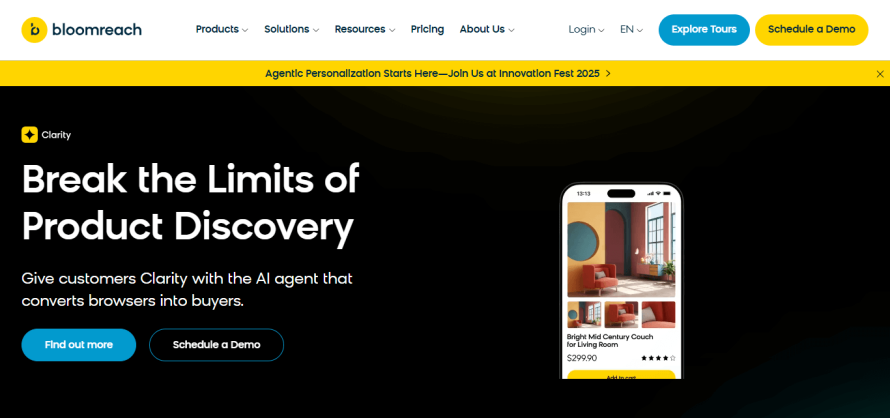
Bloomreach is a DXP that combines content management, personalization, and e-commerce capabilities. The platform focuses on AI-powered search and discovery tools to improve product findability and conversion rates. Bloomreach works best for e-commerce businesses looking to deliver personalized shopping experiences.
One of Bloomreach’s strongest features is its ability to provide AI-powered search and discovery tools. With these, businesses can improve customers’ ability to find products, driving better conversion rates and customer satisfaction. The trade-off? Like Sitecore, Bloomreach can be resource-intensive, especially for smaller businesses that don’t need its advanced search and AI functionalities. For organizations with a focus on e-commerce and search optimization, Bloomreach’s platform is a strong option.
3. Optimizely
Image

Optimizely is a DXP that combines content management with experimentation and testing capabilities. The platform includes A/B testing tools that allow businesses to run experiments at scale and measure optimization across the customer journey. Optimizely works best for organizations committed to continuous testing and iteration.
The platform's constant focus on testing and experimentation requires ongoing attention, and companies that don’t have the resources to dedicate to this level of analysis may find it more resource-intensive than needed.
Explore our post on Optimizely alternatives!
4. Adobe Experience Manager (AEM)
Image
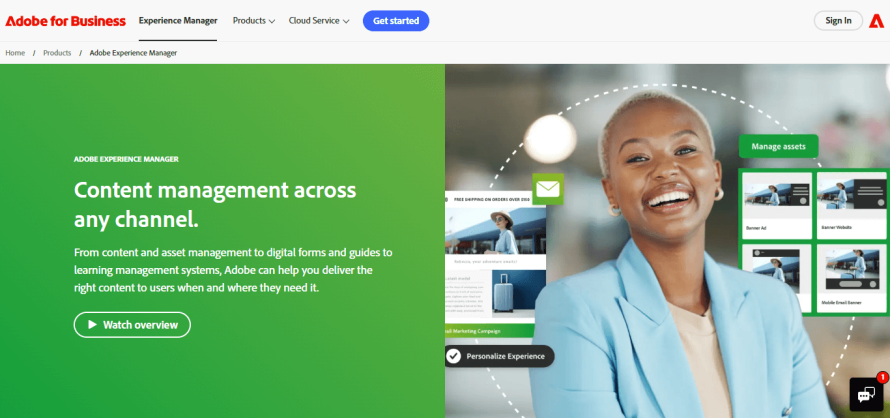
Adobe Experience Manager is a comprehensive DXP that includes content management, digital asset management, and multi-channel content delivery. The platform manages content across websites, mobile apps, and email campaigns. AEM runs on Java and integrates seamlessly with other Adobe Experience Cloud tools. AEM requires substantial server resources for enterprise deployments.
While AEM is feature-rich, it’s also known for its complexity and high cost. Smaller businesses or teams that don’t need the full AEM’s capabilities might find it overkill for their needs. For larger organizations with complex digital asset management requirements, AEM is a strong contender, but expect to pay a premium for its capabilities.
5. Liferay
Image

Liferay is an open-source platform for building portals and digital experiences. The platform runs on Java with a modular OSGi architecture and includes workflow automation, personalization capabilities, and headless architecture support.
Organizations value Liferay's open-source foundation, which allows extensive customization and integration possibilities. However, implementing Liferay requires Java development expertise and can involve significant customization effort to meet specific business needs.
6. Kentico
Image
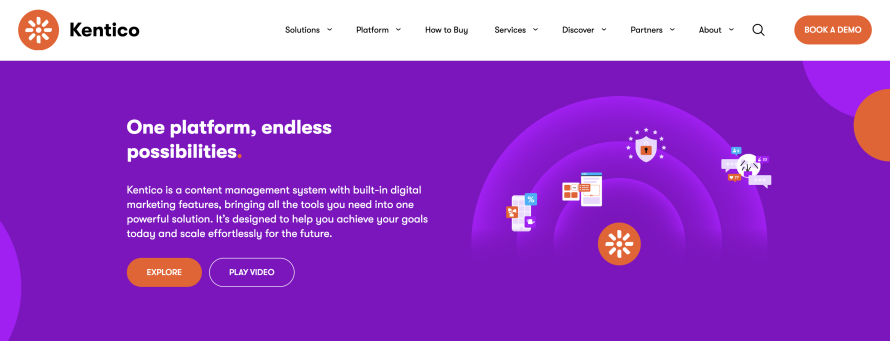
Kentico is a DXP that provides integrated marketing and content management capabilities. Built on .NET Core MVC, the platform includes marketing automation, personalization, A/B testing, and email marketing features. Kentico offers a marketer-friendly interface with low-code tools that enable page creation and campaign design without extensive developer support.
The platform integrates naturally with Microsoft technology stacks. Organizations appreciate Kentico's marketer-friendly interface and comprehensive feature set, though the platform works best for businesses already invested in the Microsoft ecosystem.
7. Upsun (formerly Platform.sh)
Image
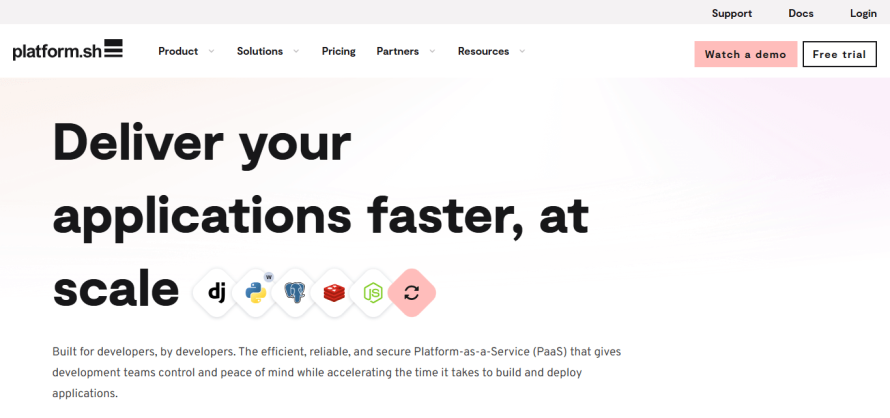
Upsun is a platform-as-a-service that supports WordPress, Drupal, PHP 7.4+, Node.js, Python, and Ruby environments. The platform provides Git-based workflows and enables teams to automate the web application lifecycle from development to deployment to scaling. Upsun's integration with Git workflows makes it suitable for agile teams that need to iterate quickly and consistently.
Upsun works best for development teams looking for infrastructure automation and control. The platform requires businesses to integrate their own marketing and content tools, making it better suited to technically capable teams rather than organizations seeking comprehensive out-of-the-box marketing features.
Unlike Acquia's Site Factory which centralizes governance, Upsun gives each site independent Git workflows and deployment pipelines. This provides more flexibility but requires teams to manage each site's infrastructure separately. Acquia standardizes the multisite experience while Upsun optimizes for independent site control.
8. Magnolia CMS
Image
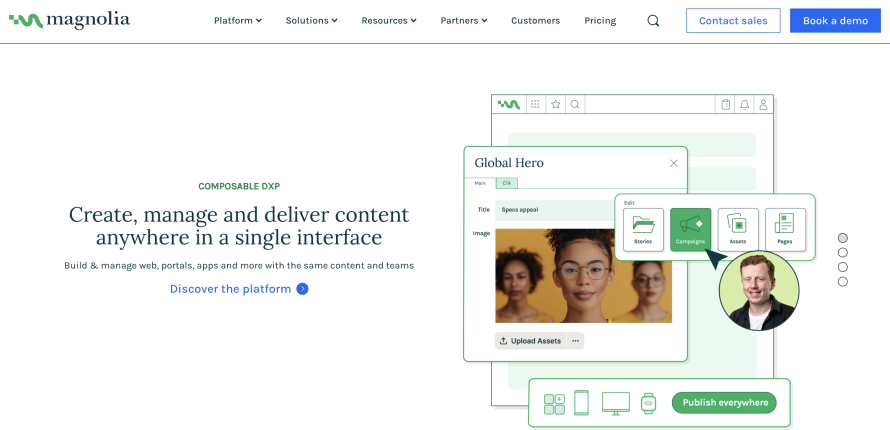
Magnolia CMS is a DXP that combines traditional CMS capabilities with headless functionality. The platform runs on Java and uses JCR (Java Content Repository) for content storage. Magnolia provides visual WYSIWYG editing tools alongside API-driven content delivery, supporting both traditional page editing and API-first approaches.
Magnolia's hybrid headless architecture allows organizations to use traditional page editing or API-first approaches as needed. The platform includes features like multi-language support, personalization, and AI-powered content tagging. While Magnolia offers flexibility for both marketers and developers, its Java foundation means organizations need appropriate technical resources for implementation and customization.
9. Contentful
Image

Contentful is a headless CMS that manages content in a central hub and delivers it across digital touchpoints. The platform provides REST and GraphQL APIs for content delivery across any frontend framework. Contentful allows teams to choose frontend technologies independently from content management.
Contentful is a strong option for organizations that prioritize flexibility and customization. However, as with any headless CMS, Contentful requires more technical knowledge and developer involvement compared to traditional platforms. The platform requires developer resources for implementation. Organizations comfortable with API-driven architecture will benefit most from Contentful's approach.
How to choose the best Acquia alternative for your enterprise
Here are a few important factors to consider as you make your decision:
- Your team’s needs and expertise: Is your team made up of developers who are comfortable with complex, customizable systems? Or are you looking for something that’s easy to use and quick to implement, with less reliance on technical resources?
- Drupal support: Consider whether you need continued Drupal support – platforms like Pantheon, Upsun, and Liferay maintain strong Drupal capabilities, while others like Sitecore or AEM would require migrating to their proprietary systems.
- Current CMS: If you're using Acquia, you're already using Drupal. If you want to change hosting but keep Drupal, Pantheon and Upsun both provide Drupal hosting without requiring a CMS migration. If you want to move away from Drupal entirely, platforms like Contentful, Sitecore, and Adobe Experience Manager offer alternative CMSs - but this requires rebuilding your site. Pantheon and Upsun also support non-Drupal options like WordPress and Next.js if you want flexibility across multiple CMSs.
- Customization vs. out-of-the-box functionality: Do you need a solution that gives you complete control over every aspect of your digital experience, or are you looking for something with built-in features like personalization, A/B testing or content management?
- Scalability and performance: Consider how your platform will scale as your business grows. Will the platform handle increased traffic and new digital initiatives without slowing down?
- Integration capabilities: The digital ecosystem is vast and your platform will need to integrate with various other tools – CRM systems, marketing automation, analytics and more.
- Cost considerations: The cost of a new platform can vary greatly depending on the scale of your operations, the complexity of your needs and the features you require. Make sure to consider both your current budget and the long-term costs of ownership as you evaluate your options.
By weighing these factors against your team’s goals and resources, you’ll be better equipped to choose the right platform that aligns with your immediate needs and your long-term strategy.
Take the next step: Switch to Pantheon
It’s time to make a move. Switching to Pantheon means giving your team the tools to build faster, collaborate more effectively and deliver exceptional digital experiences without the technical headaches. Whether you’re focused on optimizing your existing website or launching a new digital experience, Pantheon can help you get there faster and more efficiently.
Stop settling for less and start building the digital experiences your team deserves. Contact Pantheon today!
Frequently asked questions
Looking for non-DXP Acquia alternatives? We’ve got you with top Acquia alternatives for customer data, marketing automation, and digital asset management:
Is Acquia a DXP?
Acquia is a digital experience platform (DXP) optimized for Drupal. The platform provides hosting, development tools, and multisite management capabilities. Acquia is not Drupal itself - Drupal is an open-source CMS, while Acquia offers commercial hosting and tools for Drupal sites.
If I'm already on Drupal, is it easier to stick with Acquia or move to something like Pantheon?
Moving from Acquia to Pantheon is straightforward for standard Drupal sites. Both platforms support the same Drupal core, so the underlying CMS doesn't change. Organizations can transfer sites without rebuilding. Custom modules and configurations may require adjustment, but the core Drupal investment carries forward. The decision to move depends on whether Acquia's limitations outweigh the migration effort.
I'm looking for a more flexible DXP than Acquia, what should I consider?
- Pantheon and Upsun provide flexibility in tool choice and multisite customization.
- Contentful and Magnolia offer the most flexibility through headless architecture.
- Platforms like Sitecore and AEM are less flexible due to vendor lock-in.
What are the best alternatives to Acquia's Customer Data Platform?
Customer Data Platform alternatives to Acquia include:
- Adobe Real-Time CDP: Manages customer data and provides journey orchestration
- Salesforce Data Cloud: Unifies customer data from multiple sources for customer engagement.
- Twilio Segment: Collects, transforms, and routes customer data in real time.
- BlueConic: Creates unified customer profiles for individual customers.
- ActionIQ (acquired by Uniphore): Delivers customer insights and personalized marketing campaigns.
- Amperity: Focuses on customer data unification and identity resolution for brands and retailers.
Which marketing automation platforms can replace Acquia's marketing tools?
Marketing automation alternatives include:
- HubSpot Marketing Hub: Combines marketing automation with integrated CRM.
- Salesforce Marketing Cloud Account Engagement: Provides B2B marketing automation.
- Adobe Marketo Engage: Offers lead management and account-based marketing.
- Oracle Eloqua: Delivers enterprise marketing automation capabilities.
- Act-On: Provides marketing automation for mid-market businesses.
- Zoho CRM: Offers affordable marketing automation for smaller organizations.
What are alternatives to Acquia's DAM (Digital Asset Management)?
Digital Asset Management alternatives include:
- Adobe Experience Manager: Provides integrated DAM within its DXP.
- Brandfolder: Focuses on brand asset organization and distribution.
- Canto: Specializes in media asset management and collaboration.
- Cloudinary: Offers cloud-based image and video management.


